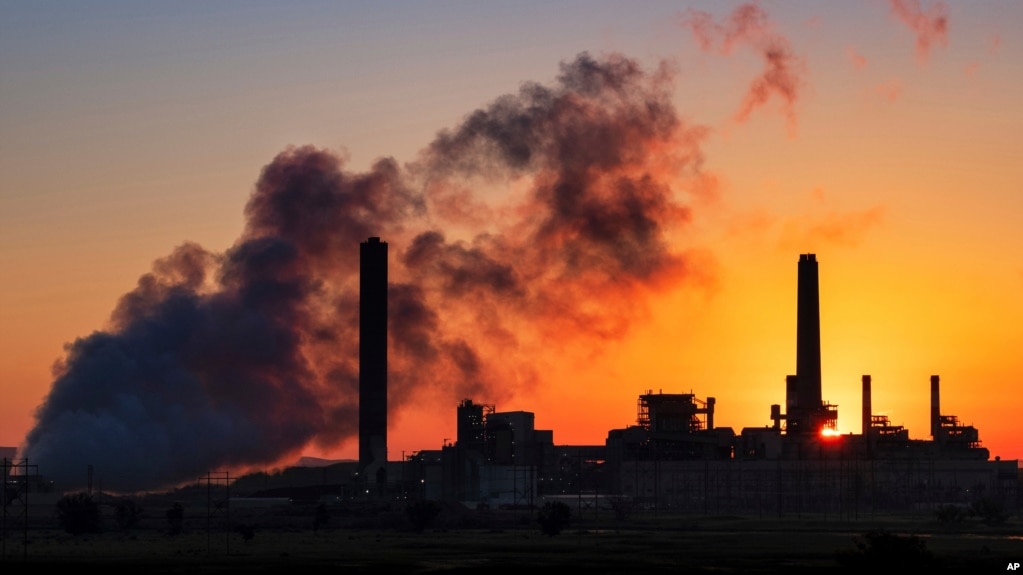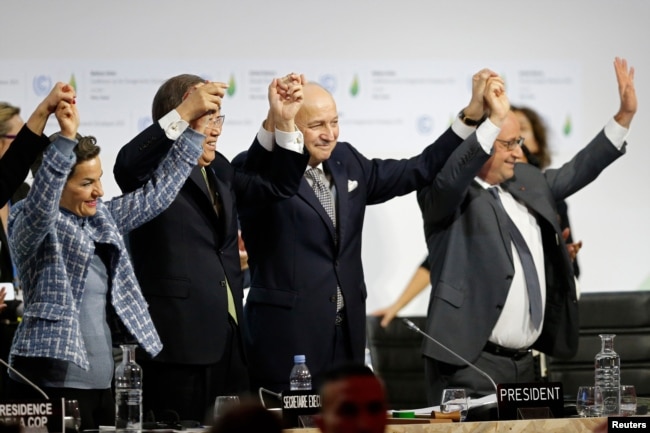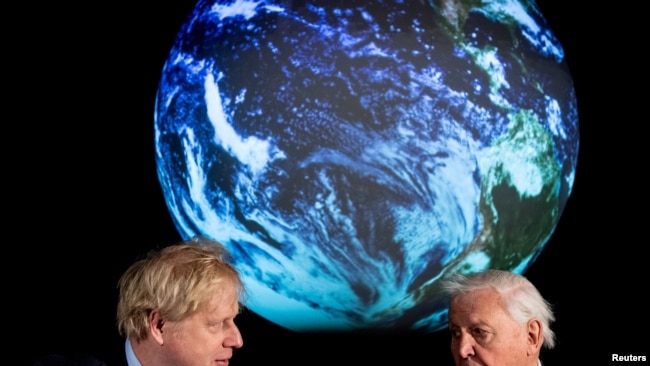COP26 Climate Summit: What’s at Stake for Planet Earth?

LONDON —
Global pledges to cut greenhouse gas emissions are just a fraction of what’s needed to prevent catastrophic global warming, according to a new report from the United Nations Environment Program.
The warning comes ahead of the critical COP26 Climate Summit in Glasgow which begins next week.

World leaders pledged to restrict global warming to no more than 1.5 degrees Celsius above pre-industrial levels at the Paris Climate Summit in 2015. However, those promises are not being matched with policies, according to the United Nations Emissions Gap Report 2021, published Tuesday.
The report warns that new commitments to reduce emissions made in the run-up to the Glasgow summit — known as Nationally Determined Contributions or NDCs — will reduce greenhouse gases by just 7.5% by 2030, compared to previous pledges. Restricting global warming to 1.5 degrees Celsius would require emissions cuts of 55 percent.
“Following an unprecedented drop of 5.4 percent in 2020, global carbon dioxide emissions are bouncing back to pre-COVID-19 levels,” the report says.
“A strong rebound in emissions is expected in 2021. Preliminary estimates suggest fossil energy CO2 emissions could grow by 4.8 percent in 2021… and global emissions in 2021 are expected to be only slightly lower than the record level of 2019.”

Petteri Taalas, the secretary-general of the U.N.’s World Meteorological Organization, said Monday the world is on course for potentially disastrous climate change. “So far, we have heard lots of political support for enhanced ambition of mitigation, but the concrete pledges have still been missing, and at the moment, we are heading towards 2.5 to 3 degrees [Celsius] warming rather than 1.5 to 2 degrees.”
So what does that mean for the planet — and for humankind?
Scientists say climate change is already increasing the frequency and intensity of heat waves. A recent report from Chatham House calculated that globally, heat-related mortality has increased by nearly 54% among the elderly since the turn of the century, reaching 296,000 deaths in 2018.
“We expect around about 400 million people to be experiencing heat waves to the extent that they're no longer able to work outside,” Chatham House report co-author Daniel Quiggin told VOA.

Heatwaves and droughts would have a big impact on global food security. Crop failures and the increased prevalence of pests and diseases — such as the locust plague in east Africa last year — would lead to soaring prices.
“Over the next 30 years, about 50% more food is going to be required due to more people being on the planet, but also expectations around eating more meat — particularly in countries like China and Southeast Asia and so on. But at the same time, under our assessment we anticipate that yields, harvests decline by around about 30%. That will only result in food price rises, making it more expensive so the poorest are unable or unlikely to be able to afford them,” Quiggin said.
Warmer temperatures lead to more intense tropical storms and flooding. Longer term, melting ice caps will lead to sea level rises, putting coastal cities at risk.
Extreme weather fluctuations also mean more intense and more prolonged droughts. Scientists say richer nations must deliver on their 2015 promise to help poorer nations pay for combating climate change and deal with its impacts.
“The big cascading impacts that we see coming out of drought, heat waves, agricultural drought, are migration, food insecurity for everyone, and the increased prevalence of pests and diseases. So, there's a vested interest for those wealthy countries to ensure the climate finance — that $100 billion per year that's been pledged for some time, since Paris [climate summit] and before, is actually delivered upon. And it's not being delivered upon at the moment,” Quiggin told VOA.
As world leaders prepare for Glasgow, the stakes for our planet — and for the human race — are getting higher; the impacts close to irreversible. Can a new global agreement be reached to slash emissions well beyond current commitments?

Summit host British Prime Minister Boris Johnson gave his assessment Monday. “I'm very worried. Because it might go wrong. And we might not get the agreements that we need. It's touch and go, it's very, very difficult,” Johnson told an audience of children in London.
Scientists say the outcome of the Glasgow summit will likely affect each and every one of us, on a warming Planet Earth.